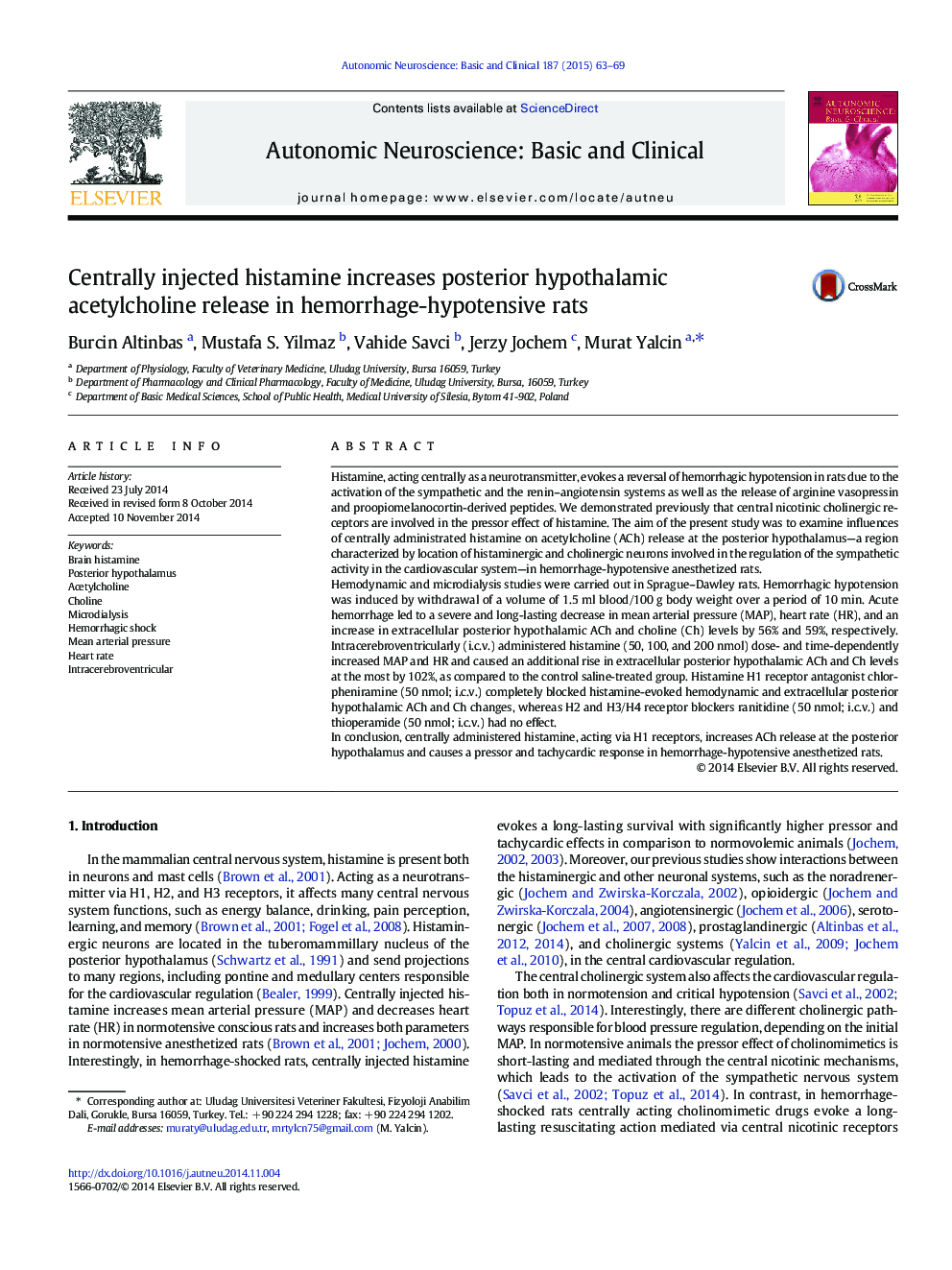| کد مقاله | کد نشریه | سال انتشار | مقاله انگلیسی | نسخه تمام متن |
|---|---|---|---|---|
| 6003969 | 1579528 | 2015 | 7 صفحه PDF | دانلود رایگان |
- Histamine increases dose- and time-dependently acetylcholine release at the posterior hypothalamus in hypotensive rats.
- Histamine causes a pressor and tachycardic response in hemorrhage-hypotensive rats despite hypovolemia.
- The activation of the central histaminergic H1 receptors mediates the centrally injection of histamine evoked these effects.
Histamine, acting centrally as a neurotransmitter, evokes a reversal of hemorrhagic hypotension in rats due to the activation of the sympathetic and the renin-angiotensin systems as well as the release of arginine vasopressin and proopiomelanocortin-derived peptides. We demonstrated previously that central nicotinic cholinergic receptors are involved in the pressor effect of histamine. The aim of the present study was to examine influences of centrally administrated histamine on acetylcholine (ACh) release at the posterior hypothalamus-a region characterized by location of histaminergic and cholinergic neurons involved in the regulation of the sympathetic activity in the cardiovascular system-in hemorrhage-hypotensive anesthetized rats.Hemodynamic and microdialysis studies were carried out in Sprague-Dawley rats. Hemorrhagic hypotension was induced by withdrawal of a volume of 1.5Â ml blood/100Â g body weight over a period of 10Â min. Acute hemorrhage led to a severe and long-lasting decrease in mean arterial pressure (MAP), heart rate (HR), and an increase in extracellular posterior hypothalamic ACh and choline (Ch) levels by 56% and 59%, respectively. Intracerebroventricularly (i.c.v.) administered histamine (50, 100, and 200Â nmol) dose- and time-dependently increased MAP and HR and caused an additional rise in extracellular posterior hypothalamic ACh and Ch levels at the most by 102%, as compared to the control saline-treated group. Histamine H1 receptor antagonist chlorpheniramine (50Â nmol; i.c.v.) completely blocked histamine-evoked hemodynamic and extracellular posterior hypothalamic ACh and Ch changes, whereas H2 and H3/H4 receptor blockers ranitidine (50Â nmol; i.c.v.) and thioperamide (50Â nmol; i.c.v.) had no effect.In conclusion, centrally administered histamine, acting via H1 receptors, increases ACh release at the posterior hypothalamus and causes a pressor and tachycardic response in hemorrhage-hypotensive anesthetized rats.
Journal: Autonomic Neuroscience - Volume 187, January 2015, Pages 63-69
